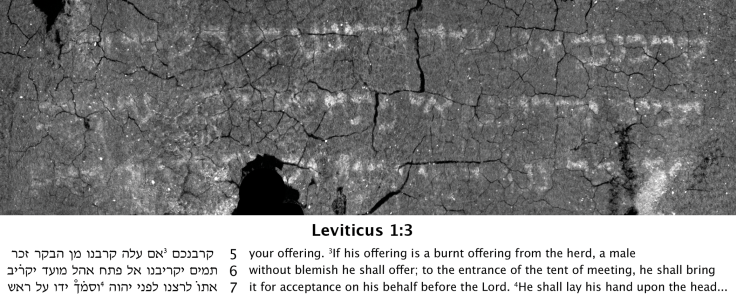Damaged Biblical Scroll Read After ‘Virtual Unwrapping’

When archeologists found a charred scroll during excavations in 1970 at a synagogue at En Gedi in Israel, they knew it was an important find but they couldn’t do anything with it. It was too brittle and fragile to be unwrapped and read, and was therefore simply preserved in a museum in Israel.
Now, new technology has allowed the animal skin scroll, estimated to be from the third or fourth century, to be virtually unwrapped and the text to be read. High-resolution scanning of the document, which revealed the scroll was a copy of the Book of Leviticus — one of the first five holy books of the Bible, collectively called the Pentateuch.
The scroll was burnt in a fire that destroyed En Gedi, on the west coast of the Dead Sea, around 600 AD. To see the content within its folds, a team of scientists, led by William Brent Seales from the University of Kentucky, used a method they call “virtual unwrapping” that “represents the internal structure of the 3-D object, to digitally segment, texture and flatten the scroll.”
In a statement, Seales said: “This work opens a new window through which we can look back through time by reading materials that were thought lost through damage and decay. There are so many other unique and exciting materials that may yet give up their secrets — we are only beginning to discover what they may hold.”
The technology used by Seales and his team is described in a research paper published Wednesday in the journal Science Advances, under the title “From damage to discovery via virtual unwrapping: Reading the scroll from En-Gedi,” and it calls itself as “a new pathway for subsequent textual discoveries buried within the confines of damaged materials.”
The En Gedi scroll is not as old or as famous as the Dead Sea Scrolls, but unlike them, its text is identical to the modern Torah. It contains 35 lines, of which 18 were preserved and the other 17 were reconstructed.

The research was funded by the National Science Foundation and supported by Google Cultural Institute.
© Copyright IBTimes 2024. All rights reserved.





















